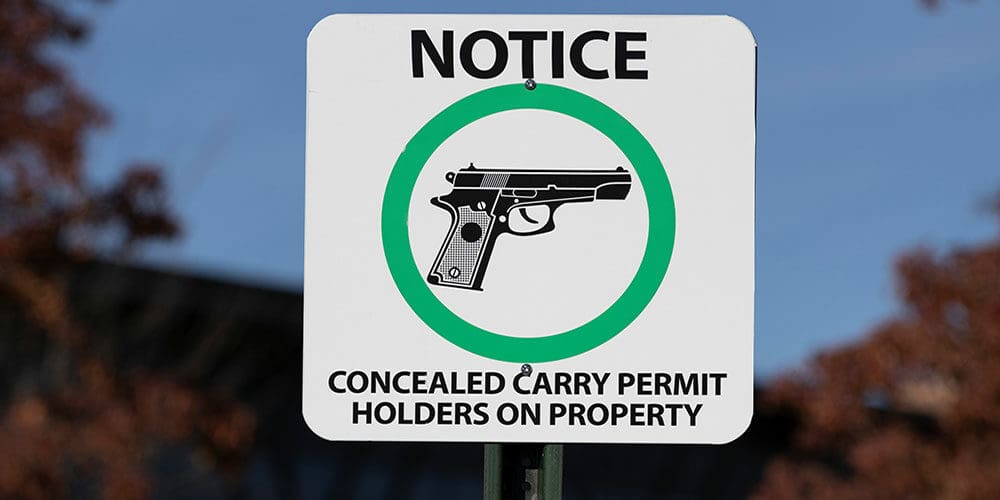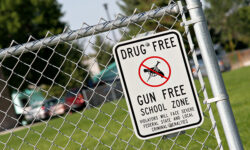Most Teachers Believe Teachers Carrying Guns on Campus Would Make Schools Less Safe
About 19% of all the teachers who participated in a new RAND study said they would carry a gun at school if allowed.

Photo: jetcityimage, Adobe Stock
Should school teachers carry guns on campus? Most teachers don’t think so, according to new research.
More than half (54%) of U.S. school teachers believe that allowing K-12 campus faculty to carry firearms would make schools less safe, according to a new study from RAND Corporation. The study also found that only 20% of the teachers surveyed believe the move would make schools safer, while 26% don’t believe arming K-12 faculty would make a difference.
How survey participants responded appears to depend on their race, gender, and whether they teach in urban/suburban or rural areas. White teachers (21%) were more likely than Black (9%) or Hispanic teachers (15%) to believe faculty carrying guns would improve school security. More than three out of five (61%) teachers in urban or suburban schools believe the move would make K-12 campuses less safe, compared to two out of five rural respondents.
Additionally, at 30%, male survey participants who teach in rural schools were the most likely to say they would personally carry a firearm on their K-12 campus if they were allowed to do so. Women in suburban schools were the least likely to say they would carry a gun on their campus (12%). Overall, about 19% of all the teachers who participated in the study said they would carry a gun at school if permitted.
The Institute of Education Sciences estimates that if sworn law enforcement officers and other nonsecurity school staff are counted, at least one adult is legally carrying a gun on school properly in about half of U.S. public schools.
The RAND study also asked teachers about the other security measures implemented at their schools, such as locks, ID badges, video surveillance, and security officers. Regardless of race or gender, about half of the teachers believe their schools’ physical security measures had a positive impact on campus climate.
Interestingly, although gun violence gets the most media attention, teachers said their most common school safety concern was bullying rather than shootings.
The survey was administered to roughly 4,000 teachers in one Midwestern state.
The National Association of School Resource Officers (NASRO) opposes arming teachers for the following reasons:
- Law enforcement officers who respond to an incident at a school could mistake for an assailant a teacher or any other armed person who is not in a uniform.
- Anyone who hasn’t received the extensive training provided to law enforcement officers will likely be mentally unprepared to take a life, especially the life of a student assailant.
- Firearm skills degrade quickly, which is why most law enforcement agencies require their officers to practice on a shooting range frequently (as often as once per month), under simulated, high-stress conditions. Anyone without such frequent, ongoing practice will likely have difficulty using a firearm safely and effectively.
- In addition to maintaining marksmanship, ongoing firearms practice helps law enforcement officers overcome the physiological response to stress than can reduce the fine motor skills required to accurately fire a weapon.
- Anyone who possesses a firearm on campus must be able to keep it both ready for use and absolutely secure. Law enforcement officers receive training that enables them to overcome attempts to access their weapons.
- Discharging a firearm in a crowded school is an extremely risky action, with consequences that can include the wounding and/or death of innocent victims. Law enforcement officers receive training and practice in evaluating quickly the risks of firing. They hold their fire when the risks to others are too high.
Editor’s Note: This article has been updated to include NASRO’s stance on teachers carrying guns on campus.
If you appreciated this article and want to receive more valuable industry content like this, click here to sign up for our FREE digital newsletters!
 Leading in Turbulent Times: Effective Campus Public Safety Leadership for the 21st Century
Leading in Turbulent Times: Effective Campus Public Safety Leadership for the 21st Century
This new webcast will discuss how campus public safety leaders can effectively incorporate Clery Act, Title IX, customer service, “helicopter” parents, emergency notification, town-gown relationships, brand management, Greek Life, student recruitment, faculty, and more into their roles and develop the necessary skills to successfully lead their departments. Register today to attend this free webcast!









Now report on the stats for schools that actually do arm staff
The demographics breakdown shown in the study, as it relates to teachers who approve of staff members being armed, demonstrates the lack of familiarity with firearms among those groups who are least likely to support arming teachers. It is not surprising that teachers in urban schools, where it may be difficult or impossible to obtain a handgun, would be unfamiliar with firearms and thus reluctant to carry one.
This issue could be easily addressed through proper training of teachers. I have been a firearms and tactics instructor for over thirty years, and I find that women make excellent students. They are willing to listen to instructions on the use of a weapon and then perform tasks as instructed. Given time and a patient, competent instructor those unfamiliar with firearms could be shown that it is merely a tool. A tool that when handled properly is safe and effective for performing the task it was designed to accomplish.
As to the objection of the School Resource Officers Association, those objections are also easily addressed through training. I would also add that I take issue with the premise of the article which conveys the impression that all law enforcement officers are as proficient with their handguns as we would like to believe. Very few departments have their officers shooting on a monthly basis. The reality for most departments is their officers participate in an annual or semi-annual qualification on a flat range. The competence of most officers employing their sidearms could use significantly more practice, but training budgets are always one of the first to be cut. A related concern is staffing, many departments cannot afford the necessary training days, because they are understaffed and need all available officers or deputies in their patrol zones.
The concern regarding responding officers engaging an armed teacher, while possible, may not be a concern if the armed teacher has eliminated the threat prior to the arrival of the first officers. Again we see a difference in the response times of large urban departments and those of rural districts with larger territories being patrolled by fewer officers. The reality is most victims are shot in the first five minutes of the attack, and average response times are in the six to eight minute range. Intervention by an armed and trained teacher, while not a guaranteed solution, provides the greatest opportunity to engage and eliminate a threat quickly.